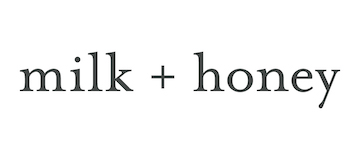milk + honey is home to a very special massage therapist named Tanner. He performs Zero Balancing for his clients who are looking to relieve body aches and pain, release restrictions in movement and provide lasting relief from emotional distress. There are many more great benefits from Zero Balancing. Call 512.263.1115 to schedule your session with Tanner today!
What is Zero Balancing?
Zero Balancing is a unique form of bodywork that recognizes the relationship of body structure and body energy. It is a body-mind therapy that uses skilled touch to address the relationships between the structure and energy within the body. It involves the use of finger pressure and gentle traction on the bones and joints to create a point of balance, or a fulcrum, around which the body can relax and reorganize itself allowing the receiver to let go of held tension and pain and experience a new level of integration.
How is Zero Balancing different from other modalities?
Forms of bodywork, such as massage, chiropractic, and Rolfing are mainly focused on improving the function of the physical body. Other modalities like acupuncture and Reiki work to enhance body energy. Zero Balancing engages both the body structure and body energy simultaneously allowing the person to come into balance with themselves and one another.
How will a Zero Balancing session work for you?
A session begins with a discussion of your current state of health and goals for that particular session. This conversation may range from reducing discomfort or tension in a specific area to improving energy levels to helping with stress relief. Next you will sit and then lie on your back, FULLY CLOTHED, unless it is integrated into a massage session. If you do combine Zero Balancing with a massage, please allow an additional 30 minutes when booking. Once you are on the table, the practitioner will assess your body for tension mainly held in the bones and joints. Then your Zero Balancer will apply gentle finger pressure or traction called Fulcrums into areas around the hips, spine, ribs, feet, and neck to support the body, allowing it to deeply relax and release held tension in these areas. This enables your own energy to flow in clearer, stronger fields and helps you to feel more in your body. The session typically lasts 30-45 minutes and can be combined with massage and other health regiments. After the session, you are given a few moments to rest or dress if needed. Then you will be asked to walk to integrate the work and to give you an opportunity to notice any changes that may have taken place during your Zero Balancing session. Zero Balancing can often take you into enhanced states of enlightenment similar to meditation, so it is helpful to walk or receive a hug. This helps to transition you back into the rest of your day.



